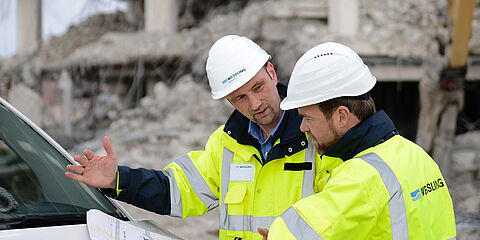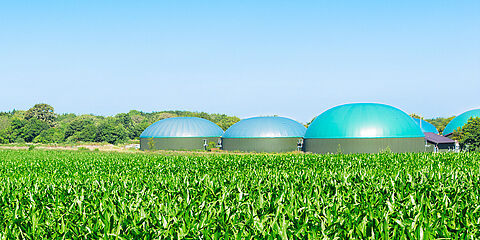Air monitoring – we ensure the quality of your air
In order to protect the environment and people from the harmful effects of air pollutants, the legislator has established directives and limits for maintaining air quality.
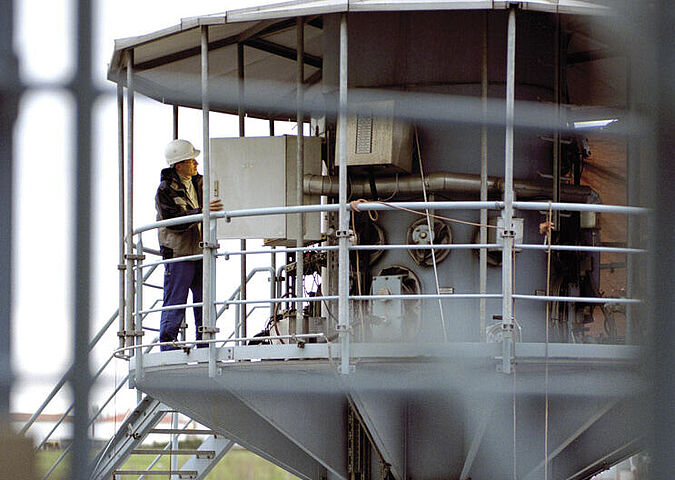
Air pollution from commercial and industrial installations must therefore be regularly monitored and assessed by an air monitoring system. The WESSLING measuring station, notified in accordance with § 29b of the Federal Immission Control Act (BImSchG), performs the following tasks for you: With officially recognized expertise and state-of-the-art measuring technology, we determine the concentrations of air pollutants down to trace amounts.
Measuring station: We determine your air data
The capabilities of our measuring station include emission measurements, performance testing and calibration of continuous monitoring systems, as well as hazardous substance measurements in the workplace and room air measurements. We identify harmful substances and additionally support our customers with special measuring technology, for example for optimising waste gas treatment plants or compressed air quality.
Air Monitoring and Measuring Station: Services in Detail
Air Monitoring and Measuring Station: Services in Detail
Emissions
Emission Measurements Legal security for your plant
According to the Federal Immission Control Act (Bundes-Immissionsschutzgesetz BImSchG), operators of plants subject to approval are obliged to carry out pollutant measurements. Our accredited* measuring station, notified in accordance with §29b of the Federal Immission Control Act, tests for compliance with the legal limit values in your plant with reliable and precise measuring technology.
Emission and immission are central concepts related to airborne pollutants. They concern the release and impact of harmful substances on systems and organisms and therefore require stringent monitoring. We determine the concentrations of atmospheric pollutants down to trace amounts and thus support you in your quality assurance.
Our services related to emission measurements:
- Emission measurements using our measuring station, notified in accordance with §29b of the Federal Immission Control Act and accredited* in accordance with DIN EN ISO/IEC 17025:2018.
- Initial and periodic emission measurements on industrial plants requiring approval, such as special-waste incineration plants, power plants, refineries, brickworks, asphalt mixing plants, foundries, printing houses and electroplating plants
- Continuous monitoring of flue gases such as nitrogen oxides (NOx), carbon monoxide (CO), sulphur dioxide (SO₂), carbon dioxide (CO₂) and oxygen (O₂)
- Monitoring of inorganic gases such as sulphur oxides (SOx), hydrogen sulphide (H₂S), hydrogen chloride (HCl), hydrogen bromide (HBr) and hydrogen fluoride (HF)
- Monitoring of organic gases such as benzene, toluene, xylenes and ethylbenzene (BTXE), formaldehyde, general aldehydes, total carbon (VOC) and amines
- Monitoring of dust and dust constituents (heavy and semimetals)
- Monitoring of highly toxic organic compounds, including dioxins and furans (PCDD/Fs), polychlorinated biphenyls (PCBs) and polycyclic aromatic hydrocarbons (PAHs)
- Sample testing in an accredited laboratory
- Coordination with authorities
- Assistance in preparing applications for plant approvals
- Preparation of emission declarations
Our customers benefit from our decentralised site structure, which makes us particularly flexible. In addition to emission tests, we also offer high-quality immission control services - please do not hesitate to contact us!
Here you find further informations on quality control of consumer products through emission tests and the Industrial Emissions Directive (IED) and the baseline report (BR).
* Testing laboratory accredited by DAkkS according to DIN EN ISO/IEC 17025:2018. The accreditation only applies to the scope of accreditation listed in the certificate attachment [D-PL-14162-01-00].
Your contact regarding emmisions
We will be happy to support you.
- Markus Neumann
- +49 234 6 897-151
- luftmonitoring@wessling.de

Air Monitoring and Measuring Station: Services in Detail
Performance tests and calibration
Monitoring systems: Quality Assurance through Testing and Calibration
Industrial plant operators often operate continuous monitoring systems to keep a constant eye on compliance with prescribed emission limits. For your quality assurance system, we check whether your measuring instruments meet the requirements and your measurements are reliable.
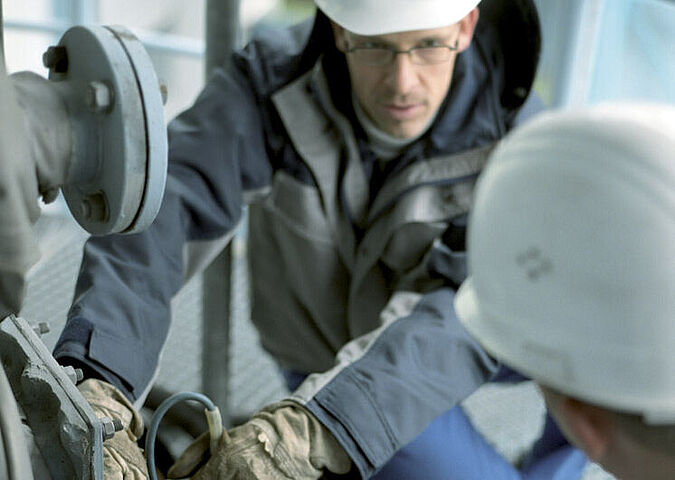
Operators of industrial plants that produce emissions must comply with the prescribed limits and be able to provide evidence that they do. If the emissions exceed certain limits, continuous monitoring with certified automatic monitoring systems (AMS) approved in Germany is necessary.
We advise you on the selection of an AMS and support you in complying with the prescribed quality assurance levels (QALs). As an approved measuring station in accordance with § 29b of the Federal Immission Control Act (BImSchG), WESSLING provides you with the installation certificate before commissioning the emission monitoring system, and carries out the annual surveillance test (AST) and a calibration (QAL2) every three years.
Our offer also applies to temperature monitoring systems for monitoring combustion conditions, such as the minimum temperature in the after-burning zone. Regular comparison of your measured values with those of the reference methods will provide you with reliable measurements.
Our services for your monitoring systems:
- Installation advice and assistance with the selection of suitable monitoring systems
- Checking the correct installation of the emission monitoring systems and preparation of the installation certificate
- Initial and periodic performance testing and calibration of the monitoring systems
Your contact for performance testing and calibration
We will be happy to support you.
- Uwe Wunderlich
- +49 30 77 507-504
- uwe.wunderlich@wessling.de
Air Monitoring and Measuring Station: Services in Detail
Hazardous substance measurements in the workplace
Safeguard Occupational Health and Safety by Monitoring Air Pollutants
The Hazardous Substances Ordinance (Gefahrstoffverordnung - GefStoffV) regulates compliance with occupational exposure limits by the employer. We are your partner in performing workplace analyses, measuring hazardous substance concentrations in the air and carrying out thorough risk assessments. For the protection of your employees.
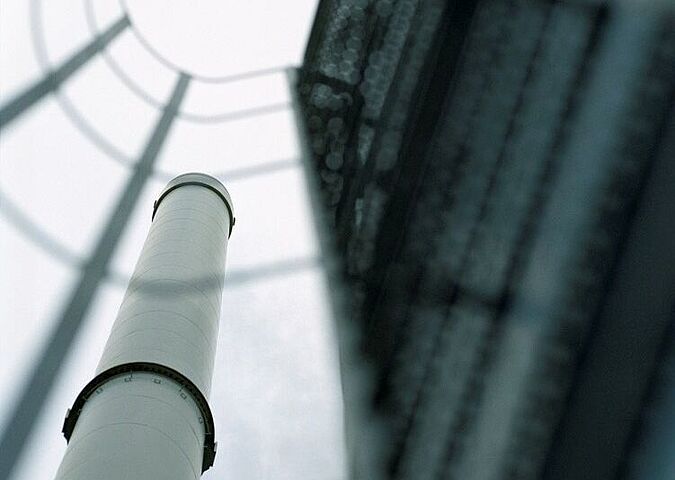
The WESSLING measuring station is accredited in accordance with §7 para. 10 of the Hazardous Substances Ordinance and therefore meets the strictest legal requirements and conditions of DIN EN ISO/IEC 17025. Our engineers and measurement technicians have many years of experience in the identification and assessment of hazardous substances and environmental health hazards in workplace air. We perform workplace analyses and control measurements for you according to the Technical Rules for Hazardous Substances (Technischen Regeln für Gefahrstoffe TRGS) 402, as well as indicative measurements over certain hazardous substance concentrations.
Recognised by authorities and insurances
Based on these prerequisites, the results and assessments are recognised both internally – for example, by your works council – and externally by authorities and accident insurance agencies.
Exposure measurements: Effectiveness checks on technical protective measures
As a supplement to information from other sources, exposure measurements are often an essential part of the risk assessment according to § 6, para. 1 of the Hazardous Substances Ordinance (GefStoffV). Exposure measurements are also suitable for checking the effectiveness of the technical protective measures, which is required by § 7, para. 7 GefStoffV and must be carried out at least every three years.
Our services related to hazardous substance measurements:
- Validated sampling and analysis methods, including IFA, DFG, NIOSH, OSHA
- Comparable results that are recognized by regulatory authorities and company insurers
- Workplace measurements in accordance with § 7 para. 10 of the GefStoffV
- Determination of dusts (A dust and E dust fractions) and dust constituents such as metal compounds and quartz
- Determination of inorganic gases and vapours such as acids, ammonia, fluorides and hydrogen fluoride
- Determination of organic gases and vapours such as solvents, alcohols, volatile aromatic and halogenated hydrocarbons and formaldehyde
- Determination of selected parameters with high analytical costs such as isocyanates and diesel engine emissions
Read more here about our offer regarding occupational health and safety.
Your contact regarding occupational health and safety
We will be happy to support you.
- Mathias Beyer
- +49 234 68 97 214
- luftmonitoring@wessling.de

Air Monitoring and Measuring Station: Services in Detail
Indoor measurements
Room Air Tests: Detect Construction Defects and Protect Health
Good room air quality depends on the use of non-toxic building materials and adequate air circulation. WESSLING carries out room air measurements for you and advises on appropriate remedial measures.

Our services regarding room air:
- Investigations into microbial contamination and measurement of, for example, building moisture
- Detection of mould spores and germs in room air and materials
- Determination of hazard potential and supporting and supervising remedial measures
- Long-term measurements on radon in relevant rooms in buildings, expert evaluations of the measurement results
- Directly displaying measurements in the building on radon to search for leaks, expert evaluations of the measurement results
- Room air certificates
Further information on our room air measurements may be found here in our Harmful Substances and Remedial Measures section.
Your contact for indoor measurements
We will be happy to support you.
- Britta Krampe
- +49 2505 89-210
- britta.krampe@wessling.de
Air Monitoring and Measuring Station: Services in Detail
Compressed air quality measurements
Increase product safety with compressed air quality measurements (ISO 8573)
Compressed air is used in almost all production and packaging processes. Contaminated compressed air can mean a loss of quality of the final products or even expensive production downtime. Based on our many years of experience with certified industrial companies, we recommend that compressed air in operational processes be regularly examined for contamination with oil, particle or microbiological contaminants.
The WESSLING measuring station has developed new mobile test benches for the food and pharmaceutical industries in order to be able to respond to the special requirements of our customers quickly and flexibly while assuring quality. In addition, we investigate the causes of compressed air contamination and advise you on how to solve the problem.
State-of- the-art measuring technology from WESSLING: independent and directly on site
We offer our customers a complete solution for assessing compressed air quality with exact quality-assured measurements and independent expert reports in accordance with the currently applicable international ISO guidelines. In detail:
- ISO 8573-1:2010-04: Contaminants and purity classes
- ISO 8573-2:2018-02: Oil aerosol content
- ISO 8573-3:1999-06: Humidity
- ISO 8573-4:2001-06: Particle content
- ISO 8573-5:2001-12: Oil vapour and organic solvent content
- ISO 8573-6:2003-05: Gaseous contaminant content
- ISO 8573-7:2003-05: Viable microbiological contaminant content
You will receive a detailed test report on the investigations carried out, including an assessment of the purity classes for each measuring point according to DIN ISO 8573-1, and thus also reliable data for your quality management system.
Compressed air quality tests in cosmetics, pharmaceutical and food companies
The purity requirement for compressed air in cosmetics, pharmaceutical and food companies, as well as the beverage industry, depends on the technical application of the compressed air. The classification of each production process is supported by standard sheets 15390-1 and 15390-2 of the German Engineering Federation (VDMA). These list the applicable limits and compressed air quality classes for the various processes.
Our services:
- Standard-compliant compressed air quality measurements in accordance with the requirements of ISO 8573
- Mobile WESSLING test benches
- Analysis in our own laboratory
- Calibration with customer-specific compressor oil
- Cause analysis in the case of elevated residual oil or particle concentrations
Further information on food hygiene and compressed air in production processes can be found here.
Your contact for compressed air quality measurements
We will be happy to support you.
- Mathias Beyer
- +49 234 68 97 214
- luftmonitoring@wessling.de

Air Monitoring and Measuring Station: Services in Detail
Special measuring technology
Special measuring technology: Optimisation of waste gas treatment plants
We advise you as operator and manufacturer of waste gas treatment plants, so that you can optimise the separation efficiency to the fullest extent. To increase the separation efficiency, it is often necessary to characterise aerosols and dust.
In our measuring station, we have developed measuring methods to condition these substances without discriminating between them and to separate them specifically. This allows us to provide customers with information on the particle size distribution and, where required, a size-dependent element distribution. The latter is increasingly used for the root cause analysis of unexplained emission effects.
Our services for waste gas treatment plants:
- Particle size distribution and particle number concentration of dusts
- Size-dependent element analysis of dusts
- Dust impactors for PM10 and PM2.5 particulates
- Determination of the concentration of sulphuric acid aerosols
- Drop size distribution of scrubber systems with impactor system
- Measurement of mercury species (separation of Hg(0) and Hg2+) in flue gases
Your contact for special measuring technology
We will be happy to support you.
- Mathias Beyer
- +49 234 68 97 214
- luftmonitoring@wessling.de

Your contact for air monitoring and measuring stations
We will be happy to support you.
- Mathias Beyer
- +49 234 68 97 214
- luftmonitoring@wessling.de






